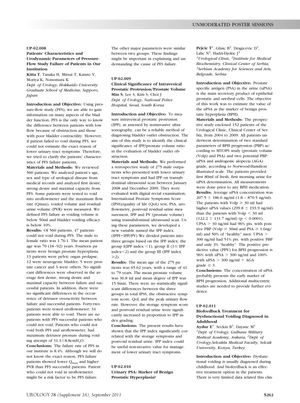Clinical Significance of Intravesical Prostatic Protrusion/Prostate Volume
September 2011
in “
Urology
”

TLDR The IPP index is linked to storage symptoms and leftover urine, and may help manage urinary tract symptoms.
The document reports on a retrospective study conducted on 275 male outpatients who presented with lower urinary tract symptoms and had intravesical prostatic protrusion (IPP) as seen on transabdominal ultrasound scans. The study, which took place between January 2008 and December 2009, aimed to determine the clinical significance of the IPP/prostate volume (PV) ratio in evaluating bladder outlet obstruction. The patients were divided into three groups based on their IPP index (IPP/PV ratio). The results showed that while there were no significant differences in total International Prostate Symptoms Score (IPSS), obstructive symptom score, quality of life, and peak urinary flow rate between the groups, the storage symptom score and postvoid residual urine significantly increased with higher IPP index grading. The study concluded that the IPP index is significantly correlated with storage symptoms and postvoid residual urine, suggesting that it could be a useful non-invasive value for the management of lower urinary tract symptoms.